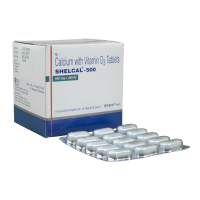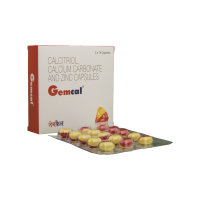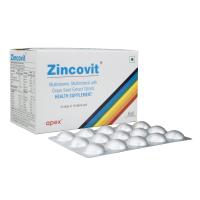USED FOR:
Bradycardia
Bacterial infections
Allergic disorders
COMPOSITION:
Atropine (1% w/v)
Chloramphenicol (0.5% w/v)
Dexamethasone (0.1% w/v)
Therapeutic Uses:
ophthal
otologicals
hormones

No interaction found

WEIGH RISKS VS BENEFITS
ATROCHLOR D EYE DROP may be unsafe to use during pregnancy.Animal studies have shown adverse effects on the foetus, however, there are limited human studies. The benefits from use in pregnant women may be acceptable despite the risk. Please consult your doctor.

CAUTION
ATROCHLOR D EYE DROP is probably unsafe to use during lactation. Limited human data suggest that the drug could represent a significant risk to the baby.

Do not drive unless you are feeling well.ATROCHLOR D EYE DROP may cause dizziness (vertigo). Changes in your eyesight or muscle weakness may also happen. This may affect your driving ability.

ATROCHLOR D EYE DROP is probably safe to use in patients with kidney disease. Limited data available suggests that dose adjustment of ATROCHLOR D EYE DROP may not be needed in these patients. Please consult your doctor.Regular monitoring of kidney function tests and other blood tests is advisable while you are taking ATROCHLOR D EYE DROP.

CAUTION
ATROCHLOR D EYE DROP should be used with caution in patients with liver disease. Dose adjustment of ATROCHLOR D EYE DROP may be needed. Please consult your doctor.
Uses of Atropine
Atropine is used in the treatment of bradycardia.
How to use Atropine
This medicine is for external use only.Take it in the dose and duration as advised by your doctor. Check the label for directions before use. Hold the dropper close to the eye/ear without touching it. Gently squeeze the dropper and place the medicine inside the lower eyelid or ear. Wipe off extra liquid.
How ATROCHLOR D EYE DROP works
Atropine belongs to class of medication called as anticholinergic drugs. It acts by blocking the activity chemicals (acetylcholine) in the body, thereby producing effects such as reduction of salivary and other body secretions, relief of abdominal pain due to cramps, increase in the heart rate, and widening of the pupil..
Common Dryness in mouth, Excessive thirst, Palpitations, Increased heart rate, Arrhythmia, Reduced bronchial secretions, Dry skin, Slow heart rate, Photophobia, Dilatation of pupil, Flushing (sense of warmth in the face, ears, neck and trunk), Difficulty in urination, Constipation, Loss of accommodation.
Expert advice for Atropine
Do not start or continue atropine, in any form if you are allergic to atropine or any other ingredients of the medicine.
Do not start or continue atropine eye drops if you wear soft contact lenses; if you have increased pressure in the eyes (glaucoma); fever or increased heart rate.
Do not start or continue atropine tablets if you have a condition called pyloric stenosis characterize with difficulty for food to move from stomach into the small intestine causing pain or vomiting; or acid reflux with heartburn (gastro-oesophageal reflux) and diarrhea.
Avoid taking atropine if you have urinary retention, high blood pressure, any heart problem including weak heart, or high thyroid hormone level.
Do not take this drug if you have rare hereditary problems of intolerance to done or more types of sugar (including galactose intolerance, the Lapp lactase deficiency or glucose-galactose malabsorption.)
Do not drink alcohol while taking atropine in any form.
Atropine can cause visual disturbances, giddiness and staggering and, therefore, caution has to be taken before operating an automobile or machinery or engaging in activities requiring mental alertness and coordination.
Q. Is atropine a controlled substance?
No, it is available as prescription drug
Q. Is atropine a beta blocker /calcium channelblocker/adrenaline/ parasympathomimetic/vasopressor?
No, atropine belongs to class of medication called as anticholinergics or cholinergic antagonist
Q. Is atropine an agonist or antagonist?
Atropine is an antagonist of cholinergic receptors
Q. Is atropine a narcotic drug?
No, it is not a narcotic. However, it is often available in combination with drugs that have abuse potential
Q. Does atropine increase blood pressure/decrease heart rate/sedation/urinary retention/increase contractility?
Atropine decreases heart rate and increases blood pressure; It causes urinary retention as well as decreased contractility of gut and urinary bladder muscles. It does not cause sedation, on the contrary, it causes excitation, sleeplessness and agitation
Q. Does atropine cross placenta?
Yes, small amount of atropine can cause placenta. Always follow your doctor’s advice regarding its use
Q. Does atropine block activity of acetylcholine /nicotinic receptor?
Yes, atropine acts by inhibiting the activity of acetylcholine on muscarinic and nicotinic receptors.
Uses of Chloramphenicol
Chloramphenicol is used in the treatment of bacterial infectionsIt is used to treat certain types of serious infections caused by bacteria when other antibiotics cannot be used.
How to use Chloramphenicol
This medicine is for external use only.Take it in the dose and duration as advised by your doctor. Check the label for directions before use. Hold the dropper close to the eye/ear without touching it. Gently squeeze the dropper and place the medicine inside the lower eyelid or ear. Wipe off extra liquid.
How ATROCHLOR D EYE DROP works
Chloramphenicol is an antibiotic. It stops bacterial growth by inhibiting synthesis of essential proteins, required by bacteria to carry out vital functions.
Common Nausea, Vomiting, Diarrhoea, Altered taste.
Expert advice for Chloramphenicol
Always take the complete course of treatment, as advised by your doctor even if you feel better. Antibiotics will not work for colds, flu, or other viral infections. Never take an antibiotic for a viral infection like a cold or the flu.
Q. Is chloramphenicol bacteriostatic or bactericidal/ an antibiotic/does it contains penicillin/ does it contain steroids/ treat styes?
Chloramphenicol is an antibiotic and exerts both bactericidal and bacteriostatic against wide variety of gram positive and gram negative bacteria including E.coli. No, it does not contain penicillin or steroids
Q. Is chloramphenicol safe/ do chloramphenicol cause aplastic anemia/ safe for babies?
Chloramphenicol is safe at recommended dose and duration; however, in some cases it has led to rare side effects such as aplastic anemia. Chloramphenicol should not be used in children under 2 years of age and used be with extreme caution in children above 2 years of age especially who have diarrhea or a stomach or bowel infection
Q. Does chloramphenicol sting/ does chloramphenicol cause dry eyes?
Chloramphenicol eye drops/ ointment may cause transient burning or stinging sensation. It does not cause but should be used with extreme precaution in patients with dry eye syndrome
Q. Can i take paracetamol with chloramphenicol?
Chloramphenicol is not known to have any drug interactions with paracetamol, however, it should be taken together as per doctor's advice
Q. Is chloromycetin a penicillin/ an antibiotic/ with the formula/ chloromycetin is a drug for which disease?
Chloramphenicol is a brand name for chloramphenicol. It is not penicillin. It is an antibiotic with the formula C11H12Cl2N2O5. It used in the treatment of serious infections in different parts of the body caused by bacteria by killing or preventing their growth
Q. Is chloromycetin over the counter/ is obtained from?
No, it is available only with your doctor's prescription
Q. Is chloramphenicol and tetracycline similar?
Chloramphenicol and tetracycline belongs to same category of drugs with similar action, but their effect may vary upon individual response
Q. Is Chloromycetin the same as chlorsig?
Both Chloromycetin and chlorsig contains chloramphenicol. Chlorsig is available as eye drop or ointment and Chloromycetin is an oral formulation.
Uses of Dexamethasone
Dexamethasone is used in the treatment of allergic disorders, severe allergic reaction, asthma, cancer, rheumatic disorder, skin disorders, eye disorders and nephrotic syndrome.
How to use Dexamethasone
This medicine is for external use only.Take it in the dose and duration as advised by your doctor. Check the label for directions before use. Hold the dropper close to the eye/ear without touching it. Gently squeeze the dropper and place the medicine inside the lower eyelid or ear. Wipe off extra liquid.
How ATROCHLOR D EYE DROP works
Dexamethasone belongs to a group of medicines called corticosteroids. It prevents late phase allergic reactions by preventing release of chemicals responsible for allergy..
Common Electrolyte imbalance, Redistribution/accumulation of body fat, Bone degradation, Increased risk of infection, Muscle disorders, Increased blood pressure, Altered bone growth, Skin scar, Behavioural changes, Increased glucose level in blood, Cataract.
Expert advice for Dexamethasone
It is a steroid medicine which works well for many different conditions, including serious illnesses. Take regularly to gain maximum benefit. Do not discontinue unless advised by your doctor. You may need to decrease the dose gradually. You may get side effects such as mood changes or stomach problems. Notify your doctor if you get them. Some side effects may occur after weeks or months. These include weakness of arms and legs, or developing a rounder face. Your risk of getting an infection may become higher. Tell your doctor immediately if you have a fever, flu-like symptoms, cough, painful urination, or a wound that does not heal.
Jawa Pharmaceuticals Pvt Ltd
₹19.6/ml of Eye Drop Out of stock


 ATROCHLOR D EYE DROP
ATROCHLOR D EYE DROP  Bookmark
Bookmark





















